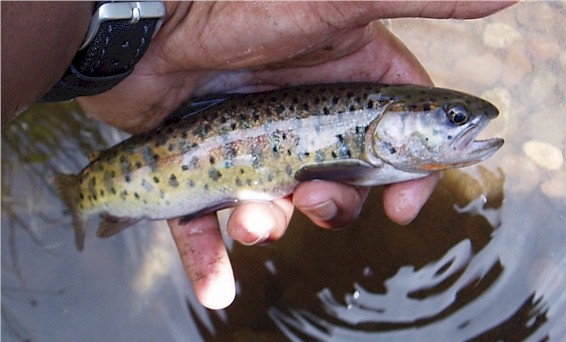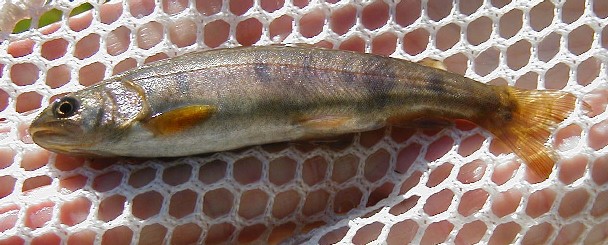|
|
|
|
|
|
|
Cutthroat trout are the most prolific sub species of the genus Oncorhynchus. Native to western North America, the Cutthroat Trout can be divided into four groups: the Lahontan Group, the Yellowstone Group, the Westslope Group and the Coastal Group. Which group or sub species the high country fly fisherman is bound to encounter depends on location. In the Pacific Northwest, those fishing streams in the coastal mountains will mostly likely encounter the Coastal Cutthroat. Those fishing in the Sierra Nevada mountain range, will mostly find the Lahontan Cutthroat but on occasion will come across what has been called the "rarest trout in the world", the Paiute Cutthroat Trout. In the Jemez Mountains of New Mexico, the fisher will find isolated populations of the Rio Grande Cutt. In Yellowstone Park, visitors will find the Yellowstone Cutthroat and the list goes on and on depending upon the mountain range. As a sub species, Cutthroat Trout exhibit an array of colors, with their bodies usually a vivid shade of yellow or green or some similar hue. All Cutthroat Trout have two things in common. The first is the bright red slash mark beneath the lower jaw, the "cut throat". The second is their proclivity to be utterly wiped out by interbreeding with Rainbow Trout. As it will do with all subspecies of the genus Oncorhynchus, rainbow trout hybrids eventually take on the appearance of Rainbow Trout. In the case of the Paiute Trout, this has almost lead to the extinction of the pure strain of fish.
|
|
|
There are twelve subspecies
of Cutthroat Trout trout: |
|
|
 |
|
 |
|
|
|
